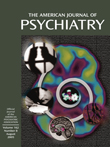Dementia: Presentations, Differential Diagnosis, and Nosology, 2nd ed.
In 1901, Auguste D, a 51-year-old woman, was hospitalized in Frankfurt because of outbursts of anger and loss of memory. After a steady downhill course, she died in April 1906. Her doctor was Alois Alzheimer, who was so puzzled by her illness that he arranged for her brain to be sent to him in Munich, where he described tangles and plaques in her cerebral cortex. Alzheimer was a colleague of Emil Kraepelin, Chairman of Psychiatry at the University of Munich. Kraepelin was impressed by these findings, perhaps in part because they were helpful in his dispute with Sigmund Freud as to whether there was a biological cause of psychiatric illnesses. However, Kraepelin’s real interests were in the long-term course of illnesses.
Auguste D had an illness now named after her physician, Alzheimer’s disease, or dementia of the Alzheimer type, the most common form of all the dementias. Her form of the illness was actually rare—early-onset dementia of the Alzheimer type.
This book is an edited collection of chapters by experts in the field of dementia and is a valuable addition to our understanding of the conditions that erode our memory. The chapters are in sections about dementia of the Alzheimer type, vascular and subcortical dementias, and depressive dementias. The editors provide excellent introductory and concluding chapters.
One of the themes of the book is the difficulty in establishing sharp boundaries between different syndromes. For example, it is not unusual to find extracellular amyloid plaques, intracellular neurofibrillary tangles, lacunar infarctions, activated microglia, and ischemic periventricular leukoencephalopathy in one brain. Damage to the microvasculature and inflammation are probably common to dementia of the Alzheimer type and vascular dementia. The new term “Alzheimer(ized) vascular dementia” emphasizes this point. The brain may suffer from more types of insults than it has types of responses, and dementia of the Alzheimer type may be best conceived of as an endpoint or final common pathway rather than a distinct illness.
It is unusual to diagnose dementia and then find a reversible cause. Depressive pseudodementia is discussed at length. Even if depression is associated with a dementia-like picture and the dementia resolves with the treatment of the depression, the improvement may prove to be transient. The depression may be “prepermanent dementia” (another new term). Psychiatrists who plan to reverse what looks like dementia by treating what they hope is depression will be dismayed by the relentless shredding of any hopes that this will be successful. Long-term follow-up, or a Kraepelinian approach, gives us a richer (but gloomier) picture of depression in old age than a short-term follow-up.
One of the editors, Emery, contributes a chapter about the exact nature of memory loss. She names the well-known phenomenon in which as we age we lose our verbal or cortical memories first, then our emotional (limbic) memories, and finally our motor or more reptilian memories, as retrophylogenesis. This explains the common situation that so often worries clinicians and children of the elderly: the person who calls people by the wrong name and can’t remember the names of her medication yet drives to and from the supermarket and her many medical appointments. The reptile within the cranium that remembers how to turn on the ignition and shift gears is better protected than is the arriviste homo sapiens in charge of remembering the names of clinicians and grandchildren.
In their chapter, the McGeers of British Columbia explicate their theory that neural inflammatory mechanisms are important in the development of dementia of the Alzheimer type. They differentiate between autotoxicity and autoimmunity and emphasize the evolutionary development of these processes. Autotoxicity, involving the complement system, is more primitive than is autoimmunity, which is mediated by the more recently developed adaptive immune system and involves peripheral lymphocytes. C-reactive protein, amyloid P, β-amyloid peptide, and some cytokines—all inflammatory mediators associated with autotoxicity—are found in the brains of people with dementia of the Alzheimer type and may play a part in the destructive activation of the complement system. This may explain the findings of reduced risk of dementia of the Alzheimer type in people who used nonsteroidal antiinflammatory drugs for years.
Treatment for dementia is disappointing. Cholinesterase inhibitors are only mildly helpful in early to mid-stage dementia of the Alzheimer type. In dementia, as in other psychiatric illnesses, psychotropic drugs from many different classes can be used, albeit with modest results. Our psychotropic agents are broad spectrum, not very effective, and cause side effects. We are reminded, however, that “excess disability” can be controlled to some extent.
Clinically observable dementia is probably the sign of a process that has been at work for years or decades. Will better control of vascular factors such as blood pressure in the population prevent dementia or merely delay it for a few years? Will the increasingly common use of statins diminish dementia? Should we be advising our patients to take daily nonsteroidal antiinflammatory medications, take vitamin E, do daily crossword puzzles, or drink red wine? If depression itself is a risk factor for dementia, what are the implications for psychiatrists?
We have come a long way since Alois Alzheimer, but it is not clear that we could treat Auguste D much more effectively than he did. Alzheimer’s astonishment at the plaques and tangles and his realization of their probable importance, as well as Kraepelin’s understanding of the necessity of following the trajectory of psychiatric illnesses as a way of understanding them, remain key discoveries. This book documents in a detailed way how research today is yielding fascinating insights into our brains, the nature of memory, and aging, but it also reveals the painfully few roads to slowing the seemingly inexorable neurodegenerative process of dementia.



